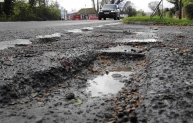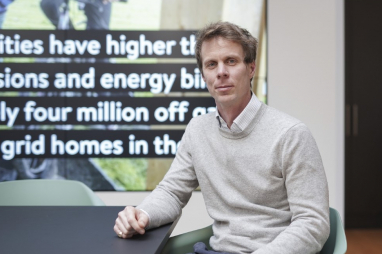- Barron Trump’s Height Is Taller Than Melania, Donald & Many Teen Boys – Fonjep News
- Nike TN Air Max Plus , nike air force 1 shadow air max dia , IetpShops , Women's Nike TN
- Air jordan 6 rings bred black university red white yellow strike playoffs big kids - 001 Release Date - air jordan 1 retro first class flight white dynamic yellow black 2021 DN4904 - SBD
- Nike Air Max 90/1 "University Red" Release Info - Nike Air Max 96 2 Women's Shoes White - StclaircomoShops
- michael jordan outlet store
- new air jordan 1 high og osb dian blue chill white cd0463 401
- air jordan 4 white tech grey black fire red ct8527 100 release date
- Air Jordan 1 Mid Bred 554724 074 2020 Release Date 4
- best nike basketball shoes
- nike air force 1 boot cordura black wheat university gold do6702 001
- Home
- News and analysis
- Info hubs
- Events
- Video
- Case Studies
- About us
- Magazine
- Advertising
Produced for the industry by the Association for Consultancy and Engineering
Analysis
2016 preview: Six big questions for transport
Will Gatwick or Heathrow get that runway? Is Highways England on the right road? What will the rail review bring? And which projects will suffer to fund better flood defences? Jon Masters ponders the transport talking points for 2016

1. Is the policy mix right?
Many in industry building the infrastructure of transport may answer “yes” to this question. Both roads and railways in Britain are likely to receive significant sums of government investment over the next five years and more, giving the impression of a good policy mix. But expanding the question beyond roads and rail might change the picture.
Traffic congestion on the roads is not going to go away. Neither is air pollution, without some bolder action to change transport in cities.
Mobility is recognised politically as an intrinsic part of the economic growth agenda. Access to jobs is as important as creating them. But transport is also about quality of life – and making cities attractive places to live. Many of the best places to visit in Europe have banned vehicles (deliveries to businesses excepted) from their centres and put really good public transport, cycling and pedestrian infrastructure in place.
The EU Environment Bureau and Germany’s environmental agency Bund are conducting the Soot Free for the Climate campaign and the Clean Air project. Their latest city ranking puts Zurich top of a league of European cities.
Switzerland’s largest city – with 1.3m people – offers a very high quality of life, according to Bund. It also scores high on air quality, not by having a low- emissions zone or a congestion charge, but by having a comprehensive strategy on reducing pollution, very good public transport, high parking fees and strict regulations on public-sector fleets.
Car use can be gradually deterred from city centres, but such measures will not be popular, at least not until populations have adjusted.
The devolution agenda will continue to take shape this year. Eventually, the bigger question may be whether elected mayors will make the big decisions.
2. Aviation: how long must we wait for more capacity?
Heathrow or Gatwick, this year or next – when will the aviation sector get a proper government decision on where to expand airport capacity in the South-east? The latest expectation is for an announcement in the spring, which could actually mean just before the government’s summer holidays.
Clearly, there is a very tough decision to be made here, but the Davies commission supported expansion at Heathrow, and if additional evidence clarifies how noise and air pollution
“A network of airports – and not just around London – is vital, serving the needs of customers, driven by competition”
Andrew Harrison, managing director of Stansted airport
limits can be met, the safer bet looks like a third runway in west London.
But when will it be built? Heathrow’s target before the latest delay was to start construction in 2020, with completion in 2025. Realistically, getting to site is going to take longer given the project’s controversy, likely legal challenges and navigation of the planning and development consent process.
Meanwhile, Manchester airport has a £1bn, 10-year expansion programme mapped out, and London City airport is hoping for £250m of investment to accommodate larger planes and more flights. Its chief executive, Declan Collier, says: “I don’t think we’ll see a new runway commissioned in the South-east much before 2028-30. That means we must make better use of existing infrastructure.”
Stansted managing director Andrew Harrison also expects 10-15 more years to pass before a new runway is built. “What is important is competition,” he says. “It drives better standards, better prices for airlines and customers, and it makes everyone raise their game. A network of airports – not just around London but across the UK – is vital, serving the needs of customers over the longer term, driven by competition.”
3. What impact will the rail review bring?
A root and branch review of the structure and financing of Network Rail is being carried out for the government by HS1 chief executive Nicola Shaw. Her full report is imminent, due in early 2016. Its conclusions at first seem unlikely to bring much change.
As Shaw acknowledged in her scoping report, published in November last year, Britain’s rail industry is a very big machine. Network Rail employs over 35,000 people. Thousands more work for the companies of its supply chain and the train operators, and there are numerous contracts, regulations and licences governing operations on the railway. Network Rail is now nearly two years into its £38bn control period five investment programme.
The Shaw report was commissioned partly in response to problems with Network Rail’s cost estimates for electrification work, which has required significant extra finance and reprogramming into the next control period. The Public Accounts Committee has reported on Network Rail’s cost escalations. Its recommendations include a fundamental review of the role and effectiveness of the Office of Rail & Road in rail infrastructure planning. As Shaw’s scoping report made clear, Network Rail had little choice but to accept the regulator’s assumptions on electrification renewal costs. Reclassification of Network Rail as a public body has also created difficulties for its financial planning.
Government’s response to recent problems has created a significant agenda of change to which the industry must adapt, Shaw’s report said. It also seemed to suggest that too much should not be expected, given everything else that’s going on within the rail sector.
A further series of recommendations will now come out, possibly calling for a gradual return to privatisation and more devolved regional management structures, all of which will take considerable time to come about.
4. Has Highways England made a difference?
Highways England (HE) will be a year old in April. In December 2105, the Office of Rail & Road (ORR) regulator reported on HE’s first six months of operation. It found the new body to be doing well in meeting its key performance indicators, though it needs to do more on road safety – numbers seriously injured on the strategic road network increased last year.
ORR and Transport Focus – the new road and rail user watchdog – have also noted that HE is doing a lot to build a better understanding of its customers. However, the new government-owned company has a long way to go in raising public awareness of its existence, role and key messages. Furthermore, all this could have been done under the previous Highways Agency structure. Introduction of a go-co detached from the Department for Transport was
“In terms of ‘fleet of foot’, the industry generally still finds the HE cumbersome and expensive to do business with”
Director of a tier-one contractor
intended to create an organisation better able to deliver programmes quickly in collaboration with its supply chain and stakeholders.
The health check here reads: “no change so far”. HE is still only nine months old, but it needs to get a move on. It has a £15bn programme to deliver, and tier-one and -two suppliers report projects “moving to the right” already. According to the director of one tier-one contractor, “There is a clear message of the three key priorities of safety, customer and delivery, but in terms of ‘fleet of foot’, the industry generally still finds the HE cumbersome and expensive to do business with.”
5. Is the pothole crisis beyond repair?

Yes, under the current broken funding regime and unrealistic expectations of what is affordable, believes Mouchel’s public services director Matthew Lugg.
The pothole issue has risen up the political agenda as local highway authority roads have continued to deteriorate under the pressure of decreasing maintenance budgets. The ALARM survey of the Asphalt Industry Alliance brings considerable exposure to the problem in March of every year, drawing attention to an overall £12bn backlog of maintenance last time around.
The figure is somewhat hypothetical because it is based on authorities’ responses to the question of how much money they would need in order to bring all their roads to a good standard immediately. This is an unrealistic expectation, according to Lugg.
“The pothole problem can be solved if the right service levels are set for particular roads,” he says. “A constitutional change is needed: the Highways Act requires authorities to maintain all roads to a good condition, but some roads could be allowed to deteriorate to tracks and then maintained appropriate to that use.”
A radical solution is also needed to fix the funding problem, according to Lugg: “The answer is hypothecation of fuel duty for road maintenance. We were told by the Treasury that this would never happen, but it’s being done with vehicle excise duty for the national strategic road network.
“We now have an imbalance of funding in favour of national roads, when all roads are seen by the public as parts of the same journey and of equal importance,” Lugg says.
He adds: “We want to see hypothecation taken to the next level, and road maintenance responsibilities should be taken away from local authorities and given to new, dedicated regional and local public-private partnerships. It’s radical but necessary.”
6. Will the weather change everything?
All bets are off for infrastructure if the climate sends weather even more extreme than that seen in recent years. Network Rail, for instance, may find that available funding for improvement projects changes considerably if sections of main line are having to be rebuilt every year due to flooding.
Planning and designing for resilience may become much more important. Or maybe the critical task will be keeping government’s attention focused on the issue when the weather is good. Cutting funding for maintenance of flood protection, then throwing money at recovery, certainly seems unsustainable.
Costs will inevitably rise if infrastructure is to be more robust for resisting heavier rainfall, colder winters and warmer summers. More open discussion may be needed with the public on realistic expectations and how to manage risk – this is just one of many solutions that industry and flooding experts think should be part of the mix.
“More joined-up land management is part of the solution,” says WSP Parsons Brinckerhoff’s head of water development, Hamish Hall. “DEFRA is involved at one end of this, working with farmers on land management issues; the Environment Agency is at the other end working on flood risk. Could the government do a lot more to join it all up, to manage uplands and reduce surface water run-off ?”
Another part of the answer has to be more serious funding for flood defences. Estimates of the clear-up costs of large- scale flooding events in the UK have ranged from £2bn to £4bn per year. Government’s current flood-protection programme pledges £2.3bn to fund 1,400 river and coastal flood-protection schemes over the six years to 2021.






